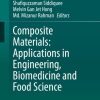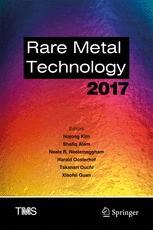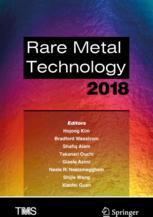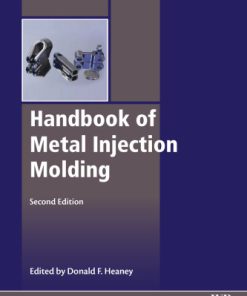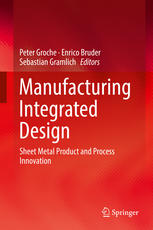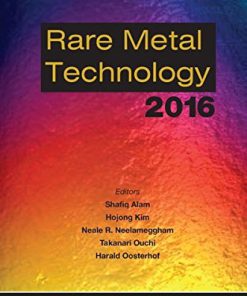Feedstock Technology for Reactive Metal Injection Molding Process Design and Application 1st Edition by Peng Cao, Muhammad Dilawer Hayat ISBN 012817501X 9780128175019
$50.00 Original price was: $50.00.$25.00Current price is: $25.00.
Feedstock Technology for Reactive Metal Injection Molding Process, Design, and Application 1st Edition by Peng Cao, Muhammad Dilawer Hayat – Ebook PDF Instant Download/Delivery: 012817501X, 9780128175019
Full download Feedstock Technology for Reactive Metal Injection Molding Process, Design, and Application 1st Edition after payment
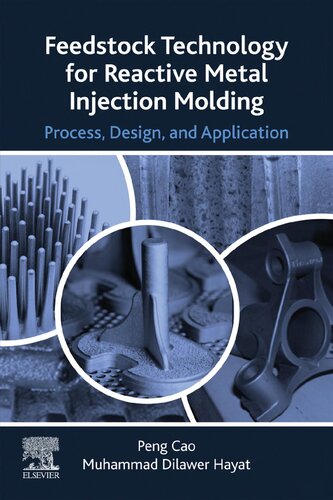
Product details:
ISBN 10: 012817501X
ISBN 13: 9780128175019
Author: Peng Cao, Muhammad Dilawer Hayat
Feedstock Technology for Reactive Metal Injection Molding: Process, Design, and Application provides an authoritative guide on the basics of feedstock technology and the latest developments in binders for titanium metal injection moulding and their potential implications. In addition, the book presents challenges that MIM technology of reactive metals is currently facing and potential solutions for commercial success. As both commercial growth and research development are fundamentally driven by the economics of manufacture, this book presents the problems and potential solutions regarding reactive metals, making it a valuable resource for engineers intending to utilize MIM in commercial product design.
- Provides comprehensive details and case studies on the feedstocks currently under extensive development, in research and in the commercial domain
- Discusses the most recent developments of binder chemistry and design, along with the most critical challenges in MIM technology
- Includes comprehensive evaluations with regard to feedstock characterization and impurity control
Feedstock Technology for Reactive Metal Injection Molding Process, Design, and Application 1st Table of contents:
1 Reactive powder metal injection molding
1.1 Metal injection molding—a standout manufacturing technology?
1.2 Overview of metal injection molding
1.2.1 Metal injection molding processes
1.2.2 Design consideration
1.2.3 Powders for metal injection molding
1.2.4 Binder selection
1.2.5 Feedstock preparation
1.2.6 Molding operation
1.2.7 Debinding
1.2.8 Sintering
1.3 Evolution of metal injection molding technology
1.3.1 Materials development
1.3.2 Technological advancements
1.3.3 Current status
1.4 Opportunities for metal injection molding of reactive metals
1.4.1 Increasing demand for miniaturization
1.4.2 Advantages over conventional manufacturing techniques
1.4.3 Demand from the medical sector
1.4.4 Materials that are hard to process
1.4.5 Market statistics and research direction
1.4.6 Applications
1.5 Constraints on the reactive powders metal injection molding
References
2 Design strategy of binder systems and feedstock chemistry
2.1 The role of binder
2.2 Basics of binder
2.2.1 Binder chemistry
2.2.2 Classifications of binder system
2.2.2.1 Wax-based binder system
2.2.2.2 Polyoxymethylene-based binder system
2.2.2.3 Water-based binder system
2.3 Feedstock chemistry and properties
2.3.1 Feedstock flow: powder characteristics and optimal solids loading
2.3.2 Shear sensitivity
2.3.3 Temperature sensitivity
2.3.4 Thermal conductivity and heat capacity
2.3.5 Strength model
2.4 Summary
References
3 Binder system interactions and their effects
3.1 Interactions between binder components
3.1.1 Polymer blends
3.1.2 Thermodynamics of polymer blends
3.1.2.1 Flory–Huggins theory
3.1.2.2 Solubility parameter approach
3.1.3 Experimental methods
3.1.3.1 Determination of interaction parameters for binary systems
3.1.3.2 Glass transition temperature (Tg) measurements
3.1.3.3 Infrared spectroscopy
3.1.3.4 Microscopy
3.1.4 Common binder blends
3.1.5 Further remarks for binder blends
3.1.5.1 Case study: complex interactions and their effects on reactive powders-MIM
3.2 Interactions between powder and binder
3.2.1 Role of surfactant
3.2.2 Basic chemistry of surfactant
3.2.3 Case study: surfactants other than stearic acid for reactive powders-MIM
3.3 Summary
References
4 Impurity management in reactive metals injection molding
4.1 The importance of impurity control
4.2 Methods of controlling impurities
4.2.1 Selection of primary component
4.2.2 Control of impurities and thermal debinding mechanisms
4.2.3 Sintering and impurity control
4.3 Points to consider for other reactive powders metal injection molding
4.3.1 Pure Al-metal injection molding
4.3.2 Metal injection molding of aluminum alloy 6061 with tin
4.3.3 Metal injection molding of Mg and its alloys
4.4 Process control
4.5 Summary
References
5 Potential feedstock compositions for metal injection molding of reactive metals
5.1 Polymers that thermally degrade by depolymerization
5.2 Minimizing oxidation in Al or Mg-MIM
5.2.1 Attempts to address Al-MIM
5.3 Commercial feedstocks and their properties
5.4 Ti-MIM success stories
5.4.1 Medical implants by Ti-MIM
5.4.2 Smart-glasses titanium arm by MIM
5.5 Summary
References
6 Outlook of reactive metal injection molding
6.1 Future trends
6.1.1 Market opportunities
6.1.1.1 Electronics
6.1.1.2 Consumer decorative products
6.1.1.3 Medical applications
6.1.2 Patents highlighting the success of reactive powders metal injection molding
6.2 Summary
People also search for Feedstock Technology for Reactive Metal Injection Molding Process, Design, and Application 1st:
feedstock technology for reactive metal injection molding
metal injection molding feedstock
metal feedstock
feedstock material
injection molding feed throat
Tags:
Peng Cao,Muhammad Dilawer Hayat,Feedstock Technology,Metal Injection,Design,Application
You may also like…
Technique - Metallurgy
Cookbooks
Engineering
Engineering - Industrial Engineering & Materials Science
Measurement Technology for Process Automation 1st Edition Anders Andersson 1351974483 9781351974486



